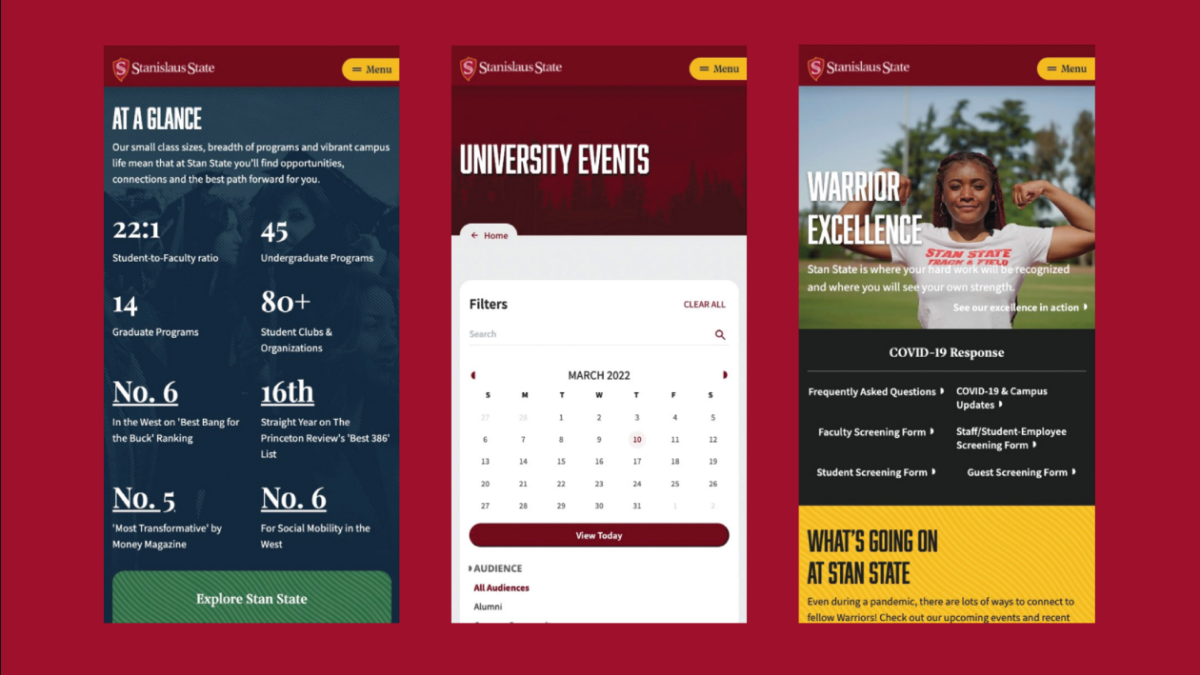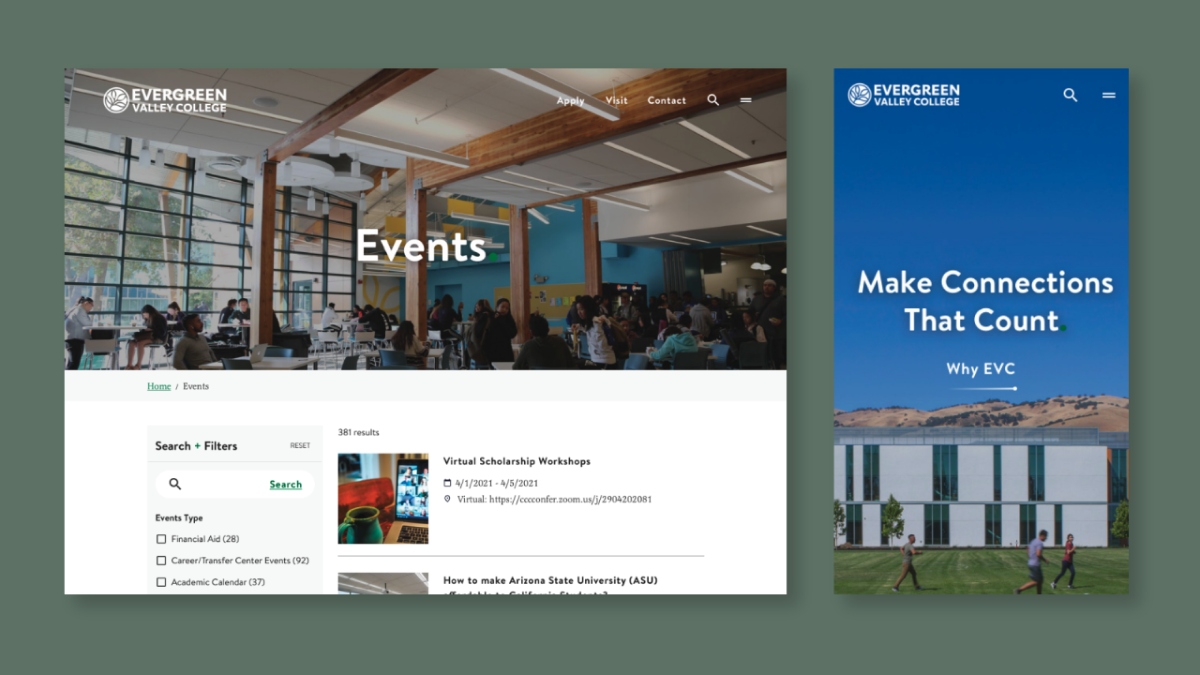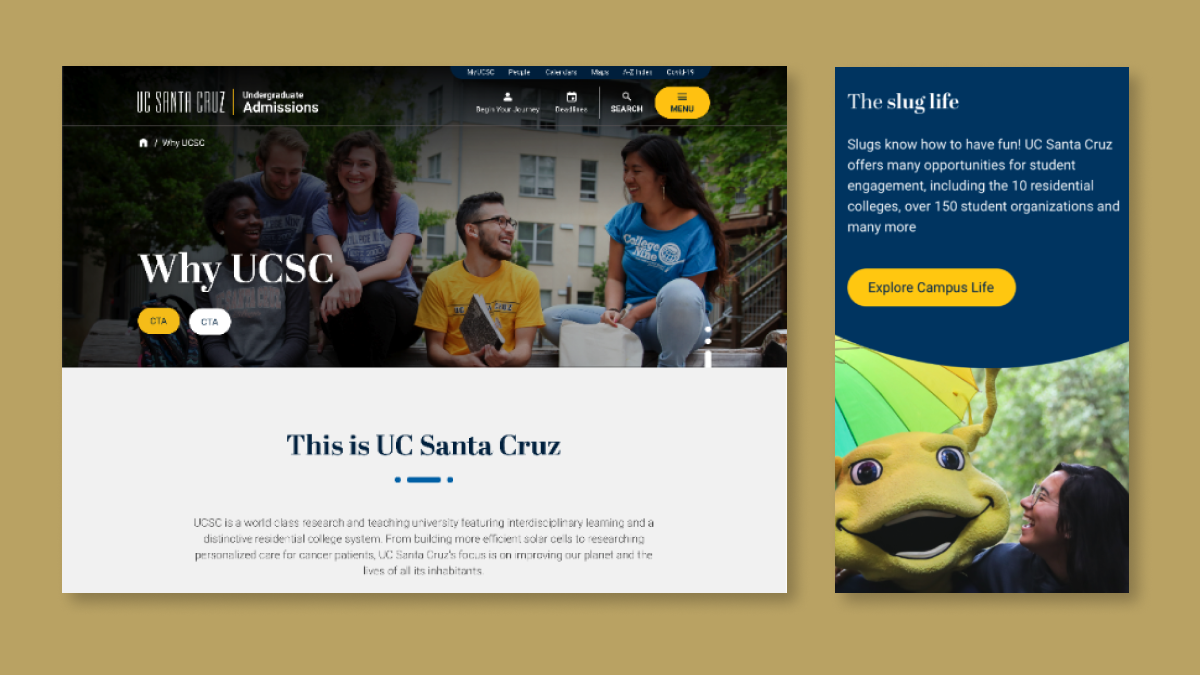Maximize Your Higher Education Website's Potential with Drupal at the Helm
Your website takes on a multitude of roles for your higher education institution. As a primary tool, it fills the role of a recruiter for prospective students. It also serves as an information hub — or even a virtual classroom — for current students. And it’s a connecting point for alums and a storyteller for donors.
Each audience has different needs. Your team works hard to deliver optimal digital experiences for all of them and meet your organization’s goals. But to achieve sustained success, your site needs to be built on a platform that not only meets your current needs but can adapt and grow with your institution.
At ImageX, we’ve worked with colleges and universities for over 20 years to design and develop impactful websites. In our experience, Drupal consistently meets and exceeds the expectations for higher ed sites.
Requirements for higher ed websites are inherently complex
College and university websites are elaborate. This means the requirements for your site — including how you need it to look and function — can be complicated. For most higher education institutions, needs fall into three categories: content, technology, and user experience (UX).
Managing content breadth and depth
Content may be the most substantial element of your website to manage. Multiple departments are vying for space to reach a variety of audiences. And each department provides abundant amounts of information. So your site needs to contain and communicate a large number of content types — course lists, news stories, faculty profiles, calendars, and more.
The challenges come when deciding who will write and edit the content. Will each department be responsible for its own or will there be a centralized content hub? Additionally, how will governance processes be established to ensure content is timely, relevant, and aligned with the university brand?
The right platform will accommodate a wide variety of content scenarios. It will allow for the right levels of access and include an easy-to-use interface for managing content workflows.

Integrating with the digital ecosystem
Your website is typically not the only digital property utilized by your higher education institution. Most (if not all) have systems not directly related to the website but integral enough to the operation that they need some level of integration or connection. These can include student information systems (SIS), learning management systems (LMS), and customer relationship management (CRM) software.
Depending on your institution, you may need a portal that pulls information from one of the systems into your website. Or you may need the capability for more sophisticated relationships between systems.
Regardless of the level of integration, you want a platform that enables connections with minimal performance, security, or maintenance issues.
Creating a positive user experience
Visitors have specific goals in mind when they visit your website. And you have specific actions you want them to take as well. Whether it’s leading prospective students down the enrollment path, showing current students the calendars and course schedules, or converting alumni to donors, each needs a clear journey through your site.
This wide array of needs and expectations creates a significant number of digital touchpoints. Each needs to be planned and implemented thoughtfully so users can easily move from point to point.
The system that powers your website should take into account UX and inclusive design principles. It should also include features that make your site intuitive and accessible for your users.

Drupal accommodates the intricacies of higher ed websites
As an open-source content management system (CMS), Drupal is free and publicly available. This supports the affinity that higher education institutions have toward the open sharing of information. It also provides the flexibility for customization as needed.
Proprietary systems typically confine sites to using the out-of-the-box features “as-is.” But the open source system allows for scalability as your organization and its needs grow.
Drupal users are also able to influence new features that are added to the product roadmap directly. With proprietary systems, feature requests are typically placed into a queue. This means they may or may not be developed in a timeframe that matches your needs. But with the direct influence, you have on the open-source system, new features and solutions can typically be delivered — and implemented — in a more timely manner.
While the flexibility and customization aspects are certainly attractive — and necessary — higher education institutions benefit from many of the current features already available in Drupal.
Robust content capabilities for cross-collaboration
With Drupal, your team can create workflows and templates that maintain your institution’s brand integrity and give individual groups the freedom to manage their own content. Based on permission levels granted, content can be easily created by numerous users but monitored in one place.
A single repository for all content is especially beneficial for content-rich sites. The “create one, use multiple times” functionality of Drupal creates consistency for your users and efficiency for your content teams.
Drupal also supports multiple languages. So if your institution has multi-location or multilingual requirements, the platform will meet those needs.
Components and integrations to meet organizational and user needs
Drupal already includes many of the website elements important to colleges and universities. Developers can find directories, calendars, course lists, advanced search functions, news templates, and more that can easily be branded for their schools.
Ashland University’s recent website overhaul is a testament to the power of Drupal. By leveraging existing components and custom layouts, they were able to create a site that is a true reflection of their brand.
Ashland also benefited from the technical capabilities of Drupal that allowed them to re-engineer the information architecture. They could bring together disparate content experiences that existed in their previous digital property.
Drupal’s ability to integrate with various SIS, LMS, and CRM platforms, along with various marketing technologies is another key selling point for the higher education ecosystem and one that many institutions are already embracing.
The UC Santa Cruz (UCSC) website was previously built on an inflexible system that didn’t connect with their undergraduate CRM. But migrating to Drupal opened the door to an integration that allowed them to better attract potential students and track conversions. In the end, the move to Drupal created a better user experience and positioned UCSC to achieve its recruitment goals.

Speaking of user experience, modules available within Drupal are designed to enhance the UX of your website. These include options that support responsive design, personalization, and performance optimization.
Community support for maintenance and updates
Ongoing maintenance and site updates are just as important as your initial launch. The extended Drupal community connects you with hundreds of thousands of developers. Our developers at ImageX are also part of this community that helps us stay current on updates to the platform.
When you run into an issue that needs to be solved quickly or need help customizing a feature, you have direct access to the expertise in the Drupal user base. This pool of people — and knowledge — is a huge advantage for colleges and universities maintaining their websites in-house. If you partner with a web development agency, they can also leverage this community for the ongoing support of your site.
The ideal fit for higher ed institutions
Higher education institutions that use Drupal — and continue to do so — find that it is a natural fit. Based on the multitude of websites ImageX has developed using this platform, we concur.
With Drupal driving their digital experiences, the online presence for colleges and universities can easily adapt as the organizations grow and change. And ongoing updates and capabilities added to Drupal, as well as the growing number of developers, keep it a right-fit solution.
Whether you’re considering a move to Drupal or deciding whether or not to continue using the platform, we can help you weigh the advantages. Let’s chat.







